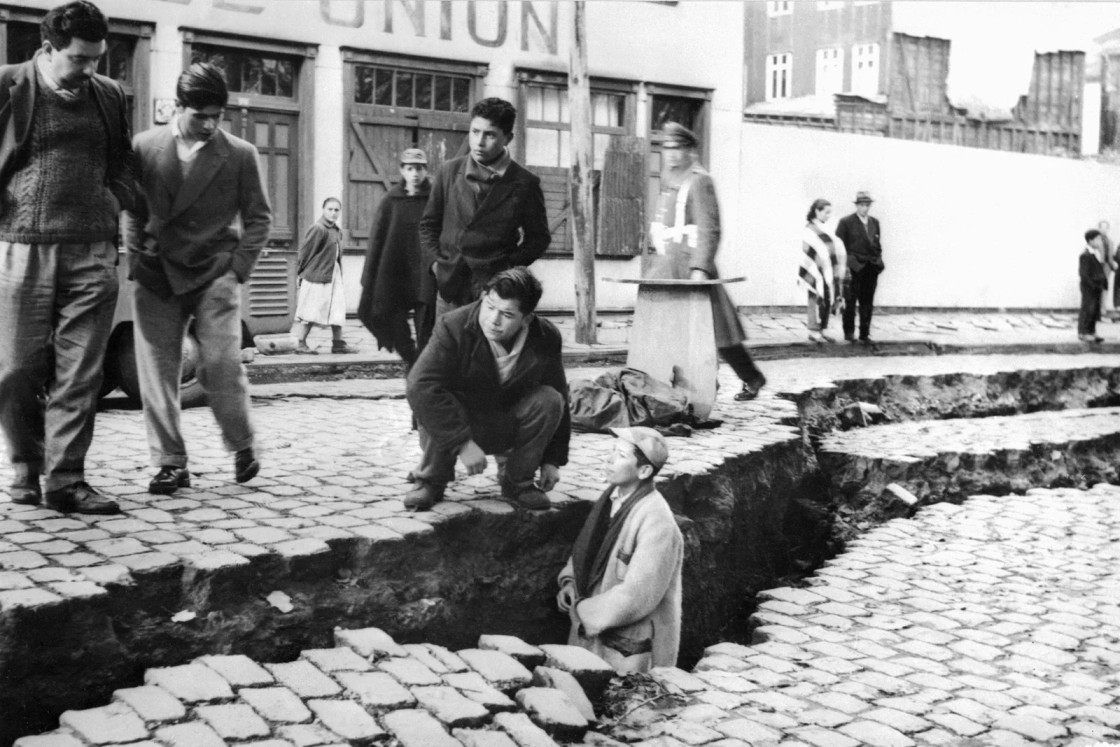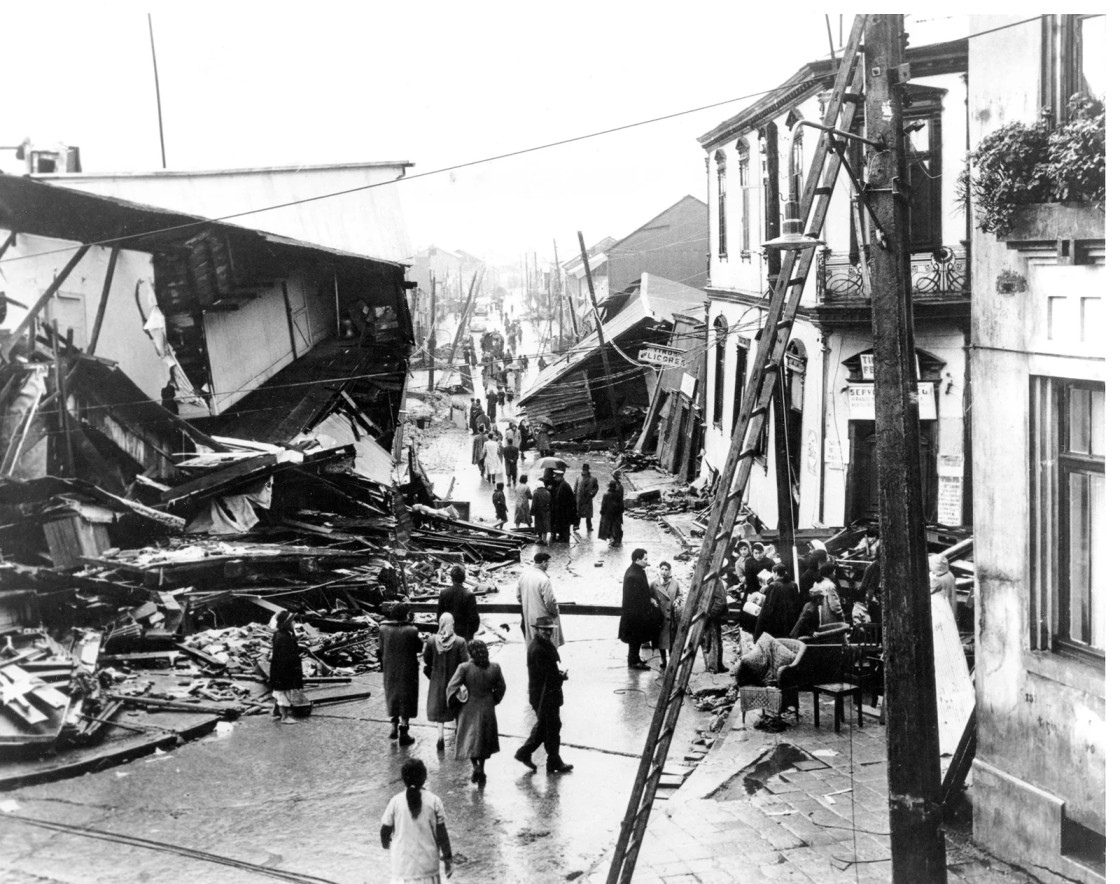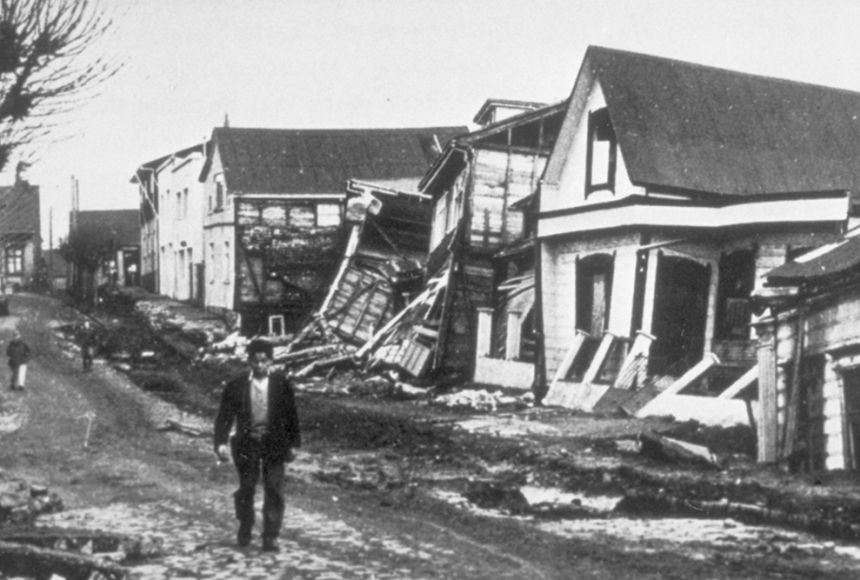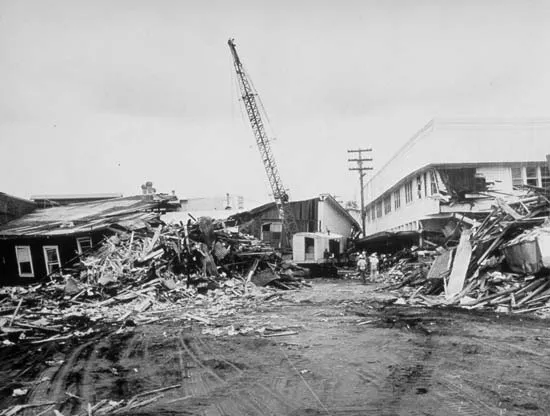The largest earthquake ever recorded struck Valdivia, Chile on May 22, 1960. Known as the Great Chilean Earthquake, it registered a magnitude of 9.5 on the moment magnitude scale, making it the most powerful earthquake in recorded history.
The 1960 Valdivia Earthquake’s magnitude of 9.5 is significant. Earthquake magnitudes are measured on a logarithmic scale, meaning each whole number increase represents a tenfold increase in measured amplitude and roughly 31.6 times more energy release. Thus, the energy released by the Valdivia earthquake was immensely greater than lower magnitude earthquakes.
The Geological Setting
Chile sits on the Pacific Ring of Fire, where the Nazca Plate and the South American Plate meet. This subduction zone, where one tectonic plate is forced under another, is prone to producing large earthquakes. The seismic activity on May 22, 1960, was the result of a rupture along the fault line that extended for over 1,000 kilometers.
Impact and Aftermath

The earthquake caused widespread destruction in southern Chile. Valdivia, the closest city to the epicenter, was devastated. The tremor triggered landslides, tsunamis, and flooding, impacting countries around the Pacific Ocean. In Chile alone, it is estimated that between 1,000 to 6,000 people lost their lives, with millions more affected.
The tsunamis resulting from the earthquake were particularly destructive, reaching as far as Hawaii, Japan, the Philippines, and the west coast of the United States. In some places, waves reached heights of up to 25 meters, causing significant damage and loss of life.

Scientific and Global Significance
The 1960 Valdivia Earthquake was a landmark event in geology and seismology. It led to significant advancements in our understanding of plate tectonics and earthquake dynamics. This event provided unprecedented data that shaped modern geological theories and practices.
Response and Recovery
The response to the earthquake in Chile and affected areas across the Pacific involved international aid and local rescue efforts. The disaster highlighted the need for better preparedness and understanding of seismic risks, especially in vulnerable coastal regions.

Chile’s Earthquake Preparedness
Since 1960, Chile has developed into one of the world’s leaders in earthquake preparedness and response. Building codes have been revised to ensure structures can withstand seismic events. Additionally, Chile has implemented an effective national emergency response system and regularly conducts earthquake and tsunami drills.
Environmental Impact
The earthquake had significant environmental consequences. It altered the landscape in parts of southern Chile, creating new lakes and lifting the ground by as much as 2 meters in some areas. The seismic activity also had an effect on the Earth’s rotation, slightly altering the length of the day.
The Legacy of the 1960 Earthquake
The legacy of the 1960 Valdivia Earthquake continues to resonate in the field of earthquake engineering and emergency management. It stands as a reminder of the power of natural forces and the importance of being prepared for such events. The earthquake’s impact on science, infrastructure, policy, and communities has shaped how the world understands and responds to seismic hazards.
The 1960 Valdivia Earthquake remains a defining moment in the history of natural disasters. Its unprecedented magnitude and the widespread devastation it caused have been deeply ingrained in the collective memory of Chile and the world. The event not only shaped geological science but also transformed how societies prepare for and respond to the immense forces of nature. As we continue to learn from this and other seismic events, the Valdivia Earthquake serves as a stark reminder of our need to respect and adapt to the dynamic planet we call home.


